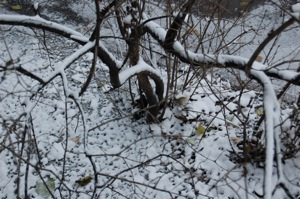HEAT AND SUN SAFETY TIPS
Symptoms of Sunburn
Symptoms of sunburn do not occur immediately. Most people have already gone home before they realize they’re sunburned.
In 15 minutes or less sunburn can occur without symptoms.
- Skin may redden as quickly as half an hour, usually 2 to 6 hours.
- Pain usually is worst from 6 to 48 hours, the burn continuing up to 72 hours, followed by peeling (and itching) which can last weeks.
- Redness.
- Discomfort and pain.
- The skin feels hot because of increased blood flowing to the area to speed healing.
- In rare and severe cases, sunburn can cause swelling, itching, rash, nausea, vomiting and fever. First and second degree burns are possible, with hospitalization necessary.

Risk of Skin Cancer
Skin cancer is a result of long term, repeated exposure to the UV rays of the sun. The ultraviolet rays of sunlight cause damage to the DNA of skin cells.
The amount of exposure to UV rays depends on many factors: what time of year it is (winter or summer), what time of day it is (peak exposure is midday – 10AM to 4 PM), terrain that increases exposure (water, snow, sand, light-colored rocky areas that reflect sunlight), is it daylight savings time?
Always protect your skin from the sun.
Sunburn Prevention
- Wear wide-brimmed hats
- Use sunscreen (at least 30 SPF) and reapply it after sweating- if you have used “enough”, that is probably not enough.
- Put sunscreen on before you hike and again at a break.
- Zinc Oxide has the highest SPF and an excellent “barrier” protectant.
- Wear long-sleeved clothes (such as Solumbra brand with UV protection)
- Sunglasses with UV protection.
NOTE: Sunglasses without ultra-violet protection can cause more damage because the pupil dilates, allowing more UV into the eye.
Treatment of Sunburn
- Time is the main treatment for sunburn.
- Topical creams & lotions relieve pain
- Fresh aloe vera in combination with olive oil to cool skin
- Cortisone cream and vitamin e oil may relieve inflammation.
- Advil and Aleve may reduce inflammation and relieve pain
- Hospitalization in severe cases (first and second degree burns).
Heat Safety when Hiking
Your body has a system in which it cools itself by radiating heat directly from blood vessels close to the skin, by exhalation and sweating.
In a hot environment, it may not be possible to drink enough water to replace the fluids your body loses as it tries to cool itself. Most people can assimilate a maximum of one liter of water in an hour, and in extreme conditions of high humidity, heat and exertion, you can lose 3 times that amount in one hour.
Your body also loses electrolytes when you urinate or sweat. Electrolyte capsules are key to maintaining hydration at high temperatures. If your stomach sloshes, you are not assimilating water and may need more electrolytes.
What to Wear in the Heat
Your sweat will not cool your body unless it evaporates; you may be in more danger of overheating on a humid day rather than a dry sunny day.
Wearing “wicking” fabrics aids the sweat evaporation process.
Cotton is not a wicking fabric.
Dehydration Symptoms
- Thirst
- Loss of appetite
- Low endurance
- Fatigue
- Headache (similar to a hangover)
- Flushing
- Rapid pulse
- Dark Urine color
- Elevated temperature
- Dry skin
- Cramps
- Dizziness or Fainting upon standing
- Inability to urinate
- Delirium
- Lethargy
- Unconsciousness
- Swollen Tongue
- Death
Prevention and Treatment of Dehydration
- Avoid alcohol
- Avoid caffeine
- Avoid dry foods
- Avoid sweating
- Hydrate regularly (thirst is not a reliable gauge)
- Drink water
- Take electrolyte capsules
- Dress appropriately to aid cooling (wide brimmed hats, light colored wicking clothing)
- Train if you plan to be active in hot weather (sunny and/or humid)
- Plan your activity to avoid exertion during the hottest part of the day
- Reduce activity, as necessary, in hot weather
- Do not drink sport drinks with high amounts of sugar
Heat cramps/Heat exhaustion/Heat stroke
These terms refer to symptoms pointing to a medical emergency brought about by the body’s inability to cool itself, progressing from uncomfortable to life threatening.
Symptoms of Heat Exhaustion
- Cramps or muscle soreness (early stages)
- Dizziness
- Feeling faint
- Nausea
- Exhaustion
- Headache
- Profuse sweating
- Rapid, weak heartbeat
- Cool, moist, pale skin
- Low-grade fever
- Dark-colored urine
Treatment of Heat Exhaustion
- Get out of the sun (shade or indoors)
- Have person lay down
- Slightly elevate feet and legs
- Loosen/remove clothing
- Wet person
- Cool by fanning
- Have person drink cool water
Covering the person with wet clothes, towels, etc may trap heat rather than cool.
Symptoms & Treatment of Heat Stroke
Heat stroke is a life threatening condition requiring immediate medical attention and hospitalization.
- High Temperature — though person may complain of chills
- Failure to Sweat — hot, dry skin ( may be moist from prior exertions, however)
- Shallow, Rapid Breathing
- Rapid Heart Rate — as much as 130 beats or more, at rest
- Hyperventilation
- Neurological difficulties such as slurred speech, failure to comprehend speech, confusion, hostility, hallucinations, seizures, loss of consciousness, coma
- Muscle weakness or cramps
For more trail safety tips, visit the OC Hiking website.





















